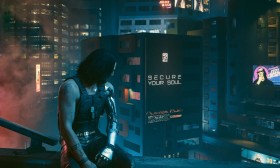Overwatch 2 Invasion Score: PvE Mission and Hero Balance Reviews
The launch of Overwatch 2 Invasion marked a pivotal moment for Blizzard’s flagship team-based shooter. Promised as a transformative update that would bridge the gap between the original game’s legacy and a new, ambitious vision, Invasion introduced a long-awaited Player vs. Environment (PvE) experience alongside significant hero reworks and balance changes. This article delves into the successes and shortcomings of these two critical components: the PvE missions and the latest hero meta, evaluating whether Overwatch 2 is moving in the right direction.
The PvE Missions: A Glimpse of Unfulfilled Potential
For years, the Overwatch community had been tantalized by the idea of a full-fledged PvE mode. The original game’s seasonal Archives events were well-received but limited in scope. Invasion promised something grander: a narrative-driven campaign that would expand the lore and deliver immersive co-op gameplay. The release includes three core missions: Resistance in Rio de Janeiro, Liberation in Toronto, and Iron Wolf in Gothenburg. Each mission features a unique setting, objectives, and a mix of storytelling and action.
From a presentation standpoint, the missions are impressive. The maps are richly detailed, and the narrative cutscenes add depth to the ongoing war between the heroes and Null Sector. The voice acting and sound design are top-notch, pulling players into the urgency of the global invasion. In Resistance, players join Lucio and Reinhardt in battling through the favelas of Rio, while Liberation sees Sojourn and Tracer confronting forces in a dystopian Toronto. Iron Wolf offers a tank-heavy mission with Reinhardt and Brigitte, emphasizing defense and coordination.

However, the gameplay experience reveals cracks in the foundation. While the missions are enjoyable initially, they suffer from repetitive mechanics and a lack of long-term replayability. The AI enemies, though visually varied, often behave predictably, reducing the challenge for coordinated teams. The much-touted talent trees, which allow players to upgrade hero abilities, are disappointingly simplistic. Instead of deep customization, players are given linear, mission-specific upgrades that feel more like temporary power-ups than meaningful progression. This is a far cry from the expansive skill trees originally envisioned during the game’s development.
Moreover, the decision to lock the PvE content behind a paywall has been controversial. While the Invasion bundle includes additional cosmetics and currency, the pricing feels steep for the amount of content provided. This monetization strategy has left many players feeling that the PvE experience is incomplete without further investment.
Despite these issues, the PvE missions are a step in the right direction. They provide a compelling, if brief, narrative experience and lay the groundwork for future expansions. With more variety, deeper progression, and perhaps a greater emphasis on challenge modes, PvE could become a cornerstone of Overwatch 2. For now, it remains a promising but underdeveloped feature.
Hero Balance: Shifting the Meta
Alongside the PvE update, Overwatch 2 Invasion brought sweeping balance changes aimed at refining the competitive landscape. The shift to 5v5 gameplay already altered team dynamics significantly, and the latest adjustments further impact how heroes are picked and played.
One of the most notable changes is the continued effort to balance support heroes, who have increasingly dominated the meta. Heroes like Zenyatta and Ana received tweaks to their utility without compromising their core identities. Zenyatta’s Snap Kick, for instance, was slightly toned down to reduce its disruptive impact on flankers, while Ana’s Biotic Grenade remains powerful but now requires more precise timing. These changes acknowledge the critical role supports play while encouraging more strategic gameplay.
Tanks also saw important revisions. Reinhardt, a fan favorite, received buffs to his Firestrike and charge capabilities, making him more viable in both PvE and PvP contexts. Similarly, Orisa’s fortify ability was adjusted to mitigate her overwhelming presence in the tank role. These changes reflect Blizzard’s attempt to diversify tank picks, moving away from a stagnant meta dominated by a few staples.
Damage heroes underwent perhaps the most transformative shifts. Symmetra’s rework, which includes faster projectile speed and adjusted turret damage, makes her more versatile in both assault and defense scenarios. Sombra’s hack ability now requires more skill to execute, reducing its frustration factor while rewarding precision. These changes highlight Blizzard’s focus on making every hero feel viable without overshadowing others.
However, not all adjustments have been universally praised. Some players argue that certain heroes, such as Genji and Tracer, continue to struggle in a meta defined by high burst damage and crowd control. The balance between mobility and survivability remains a delicate act, and further iterations may be necessary to ensure all roles feel equally impactful.
Overall, the hero balance changes in Invasion demonstrate Blizzard’s responsiveness to community feedback. The meta feels more dynamic, with a wider range of heroes seeing playtime across competitive matches. While no balance update will ever satisfy everyone, the current direction suggests a healthier and more engaging PvP experience.
The Verdict: Progress with Reservations
Overwatch 2 Invasion is a mixed bag. The PvE missions offer a glimpse into what could have been an revolutionary addition to the franchise, but they fall short of expectations due to repetitive design and minimal replay value. The hero balance changes, on the other hand, are largely successful, fostering a more diverse and competitive environment.
For Blizzard, the challenge moving forward is clear: deepen the PvE experience with more content, meaningful progression, and greater challenges, while continuing to refine the PvP balance to keep the game fresh and fair. Overwatch 2 has the potential to redefine itself, but it must learn from the hits and misses of Invasion to fully realize its ambitious vision.
In the end, Invasion is a solid foundation—one that, with continued support and iteration, could eventually deliver on the promises that have kept the Overwatch community invested for so long.














